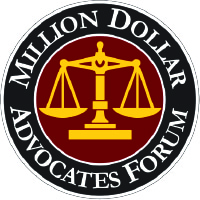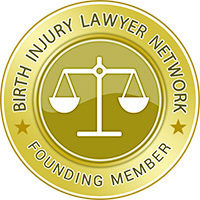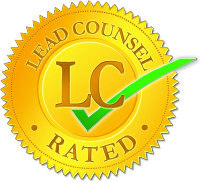The long, complicated name of this illness suits it. Hypoxic ischemic encephalopathy is complicated. No new parent wants to hear a doctor pronounce this diagnosis on their baby.
But what is HIE? It’s a type of brain injury that most often affects newborns. Also known as birth asphyxia, the condition turns a baby’s largely predictable future into a world of unknowns.
When hypoxic ischemic encephalopathy is the result of medical malpractice, it’s difficult to know where to turn. If your child received this diagnosis following a physician’s mistake, contact an HIE lawyer at Hampton & King. You may be due compensation for a doctor’s negligence.

Hypoxic Ischemic Encephalopathy: The Basics
HIE refers to brain damage caused by a lack of oxygen in the blood, plus a short supply of blood to the brain. It has many causes, ranging from blood clotting disorders to infections.
But the number one cause of HIE is complications from pregnancy, labor, and delivery. Sometimes these complications stem from a physician’s negligent actions or lack of actions. When this is the case, families should seek the help of an HIE lawyer right away.
The statute of limitations for each state puts a cap on how much time families have to file lawsuits. So it’s important to contact a lawyer as soon as your child receives a diagnosis.
Let’s break down this lengthy term into palatable pieces:
- Hypoxic: This word refers to low oxygen supply in the blood.
- Ischemic: A lack of blood flow to the brain.
- Encephalopathy: This is a blanket term referring to brain damage.
Symptoms of HIE include organ dysfunction, floppiness and unresponsiveness, and abnormal movements/seizures. A newborn with HIE may have breathing problems, low APGAR scores and feeding problems.
Treatment For Hypoxic Ischemic Encephalopathy
Patients with hypoxic ischemic encephalopathy (HIE) need treatment right away. Otherwise they can suffer further complications. For example:
- Cerebral palsy
- Epilepsy
- Hearing and vision problems
- Cognitive disabilities.
The most common treatment for HIE is therapeutic hypothermia. This is a process of lowering the patient’s body temperature about 3 degrees celsius. The goal is to treat the oxygen deficiency and stop brain degeneration in its tracks.
This treatment may not restore the patient’s brain function 100%, but it can prevent further damage. But doctors must prescribe therapeutic hypothermia right after discovering oxygen deficiency in order for it to work.
What Is HIE In babies?
Anyone can develop hypoxic ischemic encephalopathy. But it afflicts newborns the most. It affects 2-30 out of every 1,000 live births, according to the Florida Neonatal Neurological Network.
HIE in babies can be linked to medical malpractice. This is because many of its causes can be prevented. Sometimes a delivery goes wrong despite a doctor’s best efforts. But other times, a physician might stray from the standard of care, committing negligence. Here are some examples of how negligence can lead to HIE in babies:
- A woman has a high risk pregnancy and develops preeclampsia or gestational diabetes. But doctors don’t track and manage the woman’s condition.
- There are issues with the baby’s umbilical cord or placenta. Both of these are key to supplying oxygen to the baby. But physicians fail to catch the problems and treat them.
- Physicians prescribe too much medication, such as Pitocin, to speed delivery along. The medication causes strong contractions that restrict the infant’s oxygen supply.
- A mother gets an infection. Because doctors don’t take precautions to prevent it. She passes it to the baby during delivery.
- Doctors don’t offer intervention (such as a C-section) when labor is difficult. Difficult labor can cause fetal distress and oxygen deprivation.

My Child Has HIE. Do I Need An HIE Lawyer?
Did your child receive a diagnosis of hypoxic ischemic encephalopathy after birth complications? It’s possible that malpractice played a part. But you will need to pinpoint the exact cause of your child’s condition.
If there was malpractice involved, you can file an HIE lawsuit. But you must prove that a physician or nurse’s actions or inaction lead to HIE. You must also show that the doctor’s actions deviated from what any medical professional should do in that situation.
Suing a hospital or physician over your child’s hypoxic ischemic encephalopathy is no walk in the park. You’ll need to work with an HIE lawyer for best results. Your attorney will guide you through the complicated litigation process. They will help with gathering documents, evidence, and expert medical opinions to support your case.
Damages recovered from an HIE lawsuit can help give your child the best possible quality of life. Consult with expert HIE lawyer at no cost you today.












